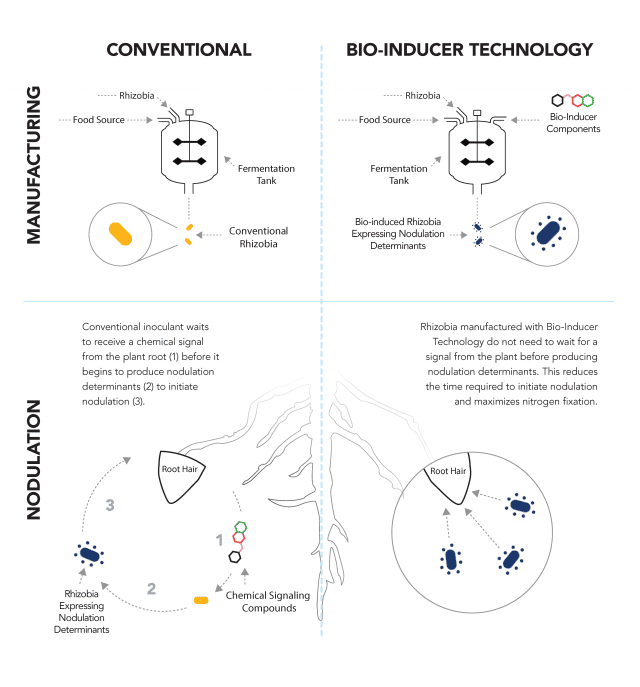To accomplish nodulation, plant roots and rhizobial bacteria commuicate using various chemical signals. This starts with a plant’s roots releasing compounds to signal nearby rhizobia that the plant is a receptive host. In turn, rhizobia respond with additional chemical signals (called nodulation determinants) initiating the nodulation process.
These nodulation determinants include:
- Nod Factors – Chemical compounds released by the rhizobia bacteria signaling the plant to initiate nodulation
- Lipopolysaccharides (LPS) – Long chain fatty acid molecules responsible for the development of the infection tube
- Type Three Secretion System (T3SS) – A protein structure used to transport substances between the cells of the rhizobia and the plant
Bio-Inducer Technology assists by stimulating earlier production of specific nodulation determinants through introducing rhizobia to plant-based signaling compounds, called Bio-Inducer components, during the manufacturing process. These compounds mimic what plant roots release naturally in the soil inducing the rhizobia to respond by releasing nodulation determinants, just as if they were already in the presence of a receptive host.
The early presence of these nodulation determinants accelerates the nodulation process in the soil and improves nodulation on a plant’s crown and primary roots, where nodules are most effective. This maximizes nitrogen fixation and yield potential, and delivers more consistent performance under all conditions.

BIO-INDUCER TECHNOLOGY IN ACTION

Signum Soybean is Equipped With Both Osmo Protector an Bio-Inducer Technologies!
